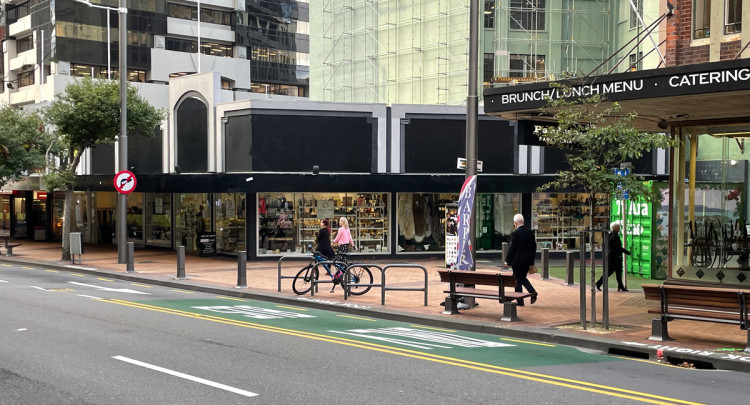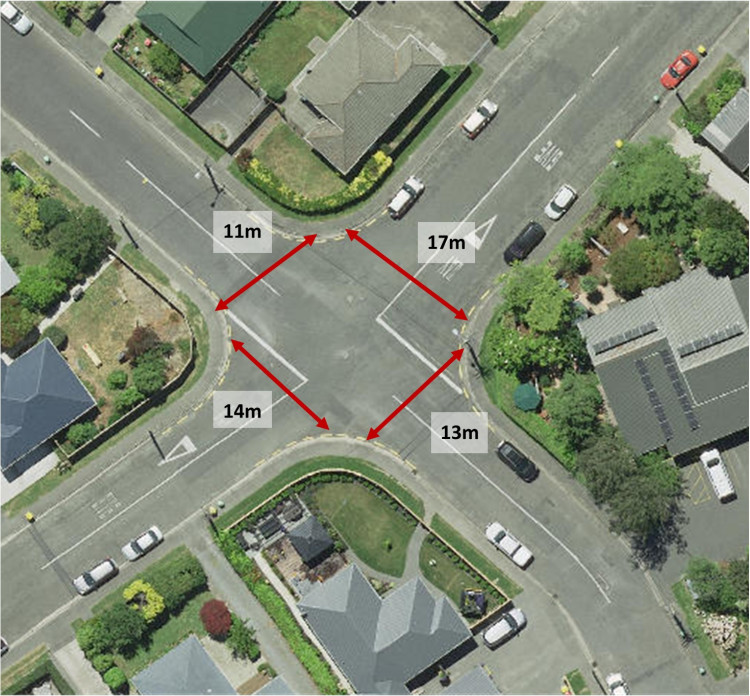The design of intersections is likely to vary depending on the function of the connecting streets, surrounding land uses and densities, its location (central city or suburban areas or rural areas), the desired vehicle operating speeds and the traffic composition.
The movement and place function of the intersecting streets is also an important consideration when designing an intersection. For example, if the street functions are not the same, for example a Local Street intersecting an Urban Connector, this may lead to different crossing requirements or demands for pedestrians on the different legs. Refer to One Network Framework page for more information on street categories and modal priorities.
Consider whether an intersection is necessary or whether it can be closed, whether the number of legs or lanes can be reduced or turn restrictions can be implemented to simplify the conflict points. In urban areas pedestrians should be able to cross every leg of an intersection.

Closure of side street to vehicles, Bond Street, Wellington (Photo: James Wratt)
Intersections should be designed to be as compact as possible as this reduces pedestrian crossing exposure, slows vehicles through the intersection, and increases visibility and safety for all road users.
Smaller intersections with small corner radii generally allow pedestrians to cross more easily as crossing distances are minimised and crossing facilities at the intersection are more likely to be on pedestrian desire lines. It is also likely to reduce the speed of turning vehicles.
The figures below show how intersection sizes vary resulting in them being more or less walkable. When designing new intersections a smaller intersection with small kerb radii is likely to be better for pedestrians (ie more walkable). In a retrofit situation, making the intersection smaller (for example by removing a lane, reducing the kerb radii and/or installing kerb extensions) is likely to result in a more walkable intersection.

Cross intersection with narrow lanes, kerb extensions and small corner radii makes for a more walkable intersection with crossing distances shown by the red arrows. (Source: Canterbury Maps)

Cross intersection with wider traffic lanes and larger kerb radii makes for a less walkable intersection with crossing distances shown by the red arrows. (Source: Canterbury Maps)
The intersection design and operation should focus on safely moving people (including pedestrians, people cycling and people in vehicles) through and across the space rather than focussing on vehicle throughput. As an example a modal priority lane could be provided to increase overall throughput of vehicles but at a cost to pedestrians as they may have an extra lane to cross.